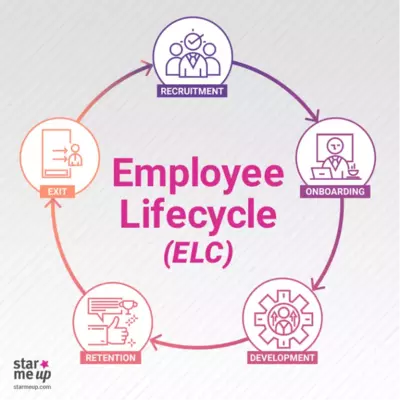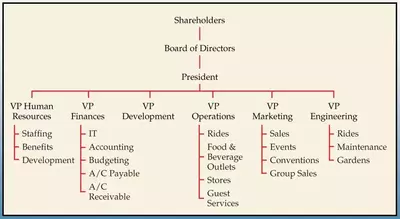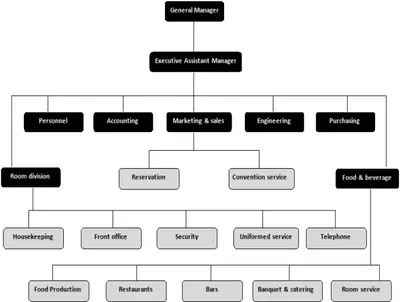Hospitality industry is one of the largest and most competitive sector that offer variety of services such as accommodation, travelling, event planning, transportation and many more. It is one of the most competitive sector which experience everyday a new concept for serving customer in more efficient manner (Kysilka and Csaba, 2013). Current report is about a Fit & Fine restaurant which is newly opened in London and offer healthy food like salad by mixing it up with smoothies and juices. This report consists of a description about several principle used for financial management along with double entry book keeping, trial balance and balance off rule. In addition to this it also includes stage of HR life cycle and its importance along with performance management plan. Apart from this it also describe about laws of hospitality industry and its impact over decision making. At last it describe about different functionality role along with communication and coordination methods applied in hospitality sector.
TASK 1
Principles of managing and monitoring financial performance
Financial performance is defined as the process of analysing the performance of a company on the bases of its financial availability and profitability which support in performing business operations effectively (Benckendorff and et. al., 2015). Fit & Fine restaurant offer variety of healthy as well as tasty salad and other related dishes along with blended smoothies & juices for providing a healthy benefit to fitness freak people. This restaurant is at Bishops gate within London EC2N which is just next to the Gymnasium that also help it in attracting more customers to their premises in order have healthy food as well as drinks.
But in order to perform its operations effectively it is very essential for the manager of restaurant to manage and monitor its financial performance so that it will be able to achieve maximum profit at minimum cost. So, in order to maintain and monitor financial performance of restaurant effectively manager must follow below given principles:
- Principle 1: Budget must be prepared effectively:-The manager of restaurant must focuses over enlisting the resources and finance which are required to perform the task effectively in order to form up an effective budget plan. Manager of Fit & Fine restaurant must try to measure the current financial performance to identify and rectify the errors within financial transaction so that it will able to minimise its operational cost.
- Principle 2: Budget must be attainable, realistic and reasonable:-A budget plan must be strictly formed for minimising the expenses but it should be formed in a way which is realistic, easier to attain and reasonable. This will help manager of fit & fine restaurant to perform its operation effectively without compromising over quality as well as profitability.
- Principle 3: Budget should be made after thorough analysis:-As per this principle a budget must formed after performing a thorough analysis within the organisational operations and requirement (Bruce and Stephens, 2017). Manager of fit & Fine restaurant must consider mission and objectives along with operations so that operations can be performed within available fund toward the direction of its goals and objectives
- Principle 4: Action financial performance must be compared:-In order to monitor and manage its financial performance, manager of Fit & Fine restaurant must regular compare its present as well as budgeted financial performance. This comparison help in  providing information regrading the area which require improvement in financial operations.
There are some expenditure and income sources which fit & Fine restaurant have are explained below:
|
Incomings (source of income)
|
Outgoings (Types of expenditures)
|
|
Gifts
|
Weekly food shopping
|
|
Benefits
|
Drinks
|
|
Allowances
|
Clothes
|
|
Â
|
Gifts
|
Double entry book-keeping system and basic trial balance
Double entry book keeping system of accounting is defined as the concept which state that every business transactions must be recorded as a correspondingly within two different accounts named as debit and credit (Chung and Chung, 2018). By maintaining a double entry book keeping the of Fit & Fine restaurant will be able to keep a better record of operations performed by them. The accountant of restaurant must enter the information so that there must be a proper information regarding the liability they have to pay and sources through which income can be generated.
Â
|
Particulars
|
Debit
|
Credit
|
|
Cash in hand (Overdraft)
|
Â
|
10800
|
|
Cash sales
|
Â
|
3250
|
|
Credit card sales
|
Â
|
14795
|
|
Petty cash expenses
|
760
|
Â
|
|
Free issues
|
675
|
Â
|
|
New kitchen equipments
|
6450
|
Â
|
|
Beverage purchases
|
12980
|
Â
|
|
Food purchase
|
8600
|
Â
|
|
Purchase return
|
Â
|
300
|
|
Discount received
|
Â
|
3200
|
|
Credit notes
|
Â
|
180
|
|
Rent
|
2750
|
Â
|
|
Utilities
|
469
|
Â
|
|
Functions and events (Income)
|
Â
|
5867
|
|
Wages
|
4690
|
Â
|
|
Debtors
|
846
|
Â
|
|
Till shortage
|
172
|
Â
|
|
Â
|
38392
|
38392
|
Trial Balance:-
It is defined as accounting report which lists down the balance that has been calculated within general ledger accounts. This includes two type of column named as credit balance and debit balance (Ervin, Â 2016). Trail balance includes accounting elements like equity, assets, liabilities, expenses, gains, losses etc. and total of both the side debit and credit must be identical.
Â
|
Particulars
|
Debit
|
Credit
|
Transaction amount
|
|
Benefits
|
Â
|
33000
|
33000
|
|
Gifts
|
Â
|
30000
|
30000
|
|
Allowances
|
Â
|
16900
|
16900
|
|
Household utility bills
|
2000
|
Â
|
2000
|
|
Weekly food shopping
|
20000
|
Â
|
20000
|
|
Clothes
|
43000
|
Â
|
43000
|
|
Gifts
|
11900
|
Â
|
11900
|
|
Drinks
|
3000
|
Â
|
3000
|
|
Total
|
79900
|
79900
|
159800
|
Balance of rule to complete the ledger
The balancing off rule within accounts is a concept which state that all the statements of a company get closed at the end of financial year and it is then forwarded to next year. This will help Fit & fine restaurant to evaluate the financial performance of business so that proper planning could be made to achieve more benefit in next year.
|
Particulars
|
Debit
|
Credit
|
|
Bank loan
|
Â
|
11000
|
|
Cash in hand
|
12000
|
Â
|
|
Capital
|
Â
|
13000
|
|
Rates
|
1900
|
Â
|
|
Trade creditors
|
Â
|
12000
|
|
Purchases
|
12500
|
Â
|
|
Sales
|
Â
|
15000
|
|
Sundry creditors
|
Â
|
1820
|
|
Debtors
|
11000
|
Â
|
|
bank loan interest
|
1520
|
Â
|
|
Other expenses
|
11900
|
Â
|
|
Vehicles
|
2000
|
Â
|
|
Total
|
52820
|
52820
|
TASK 2
Stages of HR life cycle for retaining and developing talent
Human resources management plays a crucial role within development or retention of employees that further contribute toward the business success by performing their tasks effectively (Bowie and et. al., 2016). By proper management of employees, Fit & Fine restaurant will be able to position its business effectively within marketplace and also able to accomplish its goals. But in order to properly manage human resources effectively manager of restaurant must focuses toward adopting HR life cycle for developing a high skilled workforce. The HR life cycle is given below  that can be used by Fit & Fine restaurant in hiring and managing a new HR executive:

                                                                                                    (Source: Employee life-cycle, 2019)
Recruitment:- It refers to the process of selecting candidate out of available applicants who meet with the qualification and skill requirement by the company for particular job vacancy.  In this stage manager of Fit & Fine restaurant will perform a talent acquisition in order to select candidate who have required experience as well as skills that are needed for this HR executive position (Filimonau and Delysia, 2019). This is can be done through evaluating the information required by the applicant and  taking their interview.
On boarding:-Â Once the appropriate candidates get selected its next step is to provide those candidate an onboard training. During this training the HR will work over maintain a better relation with new candidate and try to develop a sense of knowledge related to the policies and procedure of restaurant. Â Throughout this process manager of restaurant will be bale to make new employee familiar with the working environment and their task or jobs.
Development:-Â Under this step manager of Fit & Fine restaurant will provide several new tasks as well as opportunities to new employees so that they can improve their skills or capabilities (Jayawardena and et. al., 2013). In addition to this they may also arrange training programs for employees in order to make them prepare for future challenges as well as growth opportunities.
Retention:-Â In this stage the manager of Fit & Fine restaurant will perform several activities in order motivate its employees to work harder and contribute toward the accomplishment of business objectives. For employees retention they may provide rewards and promotions over the performance of employees.
Exit:-Â this is last stage of HR life cycle in which manager of Fit & Fine restaurant will take interview and feedback from the employee who is leaving job in order to determine the reason behind this decision and improvement that are required to be made within the current working condition (Kibirango, Munene and Mutumba, 2018). This support in improving the weaker point so that restaurant will be able to retain employees and accomplish its goals and objective on time.
Manager of Fit & Fine restaurant conducted an analysis as well as evaluation over hiring of appropriate candidate for the vacant position of HR executive, which is given below:
Box 1: Job vacancy related advertisement will be placed through several communication media which includes newspaper, job portals, social media sites etc.
Box 2: After getting number of applicant talent acquisition will be performed by analysing the documents provided by the candidates as well as y conducting interviews.
Box 3: Interview Questions
- Do you consider yourself skilled enough to handle this position?
- Why would we hire you?
- Would you be able to tackle with people over phone calls?
- Do you have experience in writing formal letters?
Box 4: During on boarding and  induction program manager of restaurant will introduce new employees within existing one and make them familiar with the working environment as well as task they have to perform within restaurant.
Box 5: For conducting performance review, manager will compare the before and after training performance of employee for determining whether they get adopted to working culture or further training is required.
Box 6:Â In order to conduct learning and development of employees, Fit & Fine restaurant will provide training to new HR executive so that operations could performed effectively. This training is related to legal aspects that restaurant must consider and policies over which operations are performed.
Box 7: Promotion is a form of reward which is provided to employees over the work or job performance given by them at workplace. It is very essential for the manager to promote or reward its employee in order to keep them motivated and dedicated toward the work performed by them.
Box 8: It is a situation when an employee decided to leave their job when they get retired or feel demotivated to work at that place. For this employer formulate effective strategies  to retain and keep its employees motivated toward work.
Box 9: Exit interview questions
- Why you are leaving your job?
- Do you find any difficulty while working here?
- How good your relation was with manager?
- Would you like to give any advice or suggestion?
- What things you like and dislike about job?
Importance of HR life cycle to management
HR life cycle plays an essential role within the recruitment and management of employees within the organisation. By applying HR life cycle, Fit and Fine restaurant will be able to have following benefits:-
- HR life cycle will help restaurant in hiring skilled and competent workforce at job which further support them in accomplishing their goals and objectives (Kysilka and Csaba, 2013).
- By following this life cycle, it will be able to retain the employees for longer period of time by performing several activities for keeping employees motivated toward their job.
- In addition to this by providing regular training and development to the employees it will be able to increase their skills and capabilities.
- By recruiting employees for longer period of time restaurant will be able to reduce the chance of error as well as cost of recruitment on regular basis.
Judgement and recommendations of HR processes
In order to conduct HR processes in effective manner it is recommended to Fit & Fine restaurant that it must provide regular training to its employees so that their skills as well as performance can be improved. In addition to this, it must also reward and appreciate employees  over  their performance in order to keep them motivated toward their jobs and responsibilities so that objectives could be accomplished.  Manager must also encourage employees to share their issues or problem so that proper strategies could be formulate to remove them so that employees could be retain for longer period of time.
Performance management plan
Performance management plan is defined as a tools or technique that consist of set of activities that are decided by company with an aim to improve the performance of its employees at workplace (Legrand and et. al., 2012). Being a newly formed restaurant it is very essential for Fit & Fine restaurant to formulate an performance management plan in order to create a high skilled and competent workforce that support in delivering high quality service. Fit 7 Fine restaurant formulate an performance management plan for rectifying the issues that employees are facing. Discussion performed by manager with its employees is explained below:
Script 1:
Manager: Hey John,
John:- Yes sir.
Manager: It has been noticed that you remain frustrated while performing work within restaurant.
John:Â Yes sir, this is because the work pressure is too high and no one is their to guide us regarding the tasks.
Manager: Okay, this issue will be resolve as soon as possible. Would you like suggest something?
John: Yes sir, please add more member to team so that we can get required guidence regarding over work.
Manager: Okay, I will hire more employees who can observe or guide your work. In addition to this I will also arrange training session for you and your colleagues.
John: Okay thank you sir
Script 2:
Manager: Â I am observing that your are making more mistakes within your work.
Employee: Yes sir, I also feel this and reason is that I am facing trouble in handling work related issues.
Manager:Â Do you have more work pressure which is affecting your perfoprmance..
Employee:Â No sir, I didn't get proper guidence about the area in which I have to work.
Manager: Okay, then I will arrange training session for you so that mistakes could be minimise.
Employee: Okay, thank you sir.
TASK 3
Legislation related to hospitality industry
There are number of law and legislation has been formulated by the government to guide the businesses related to Food & beverages in their practices which are safe for both business as well as consumers (Legrand, Chen, and Sloan, 2013). Fit & Fine restaurant is required to adhere following laws and regulations:
Food & Safety Act 1990:- This law has been formulate to guide the activities performed by the restaurant related to food preparation and services. According to this law, Fit & Fine restaurant must focuses over serving food to customer which is as per their expectation and doesn't harm to their health. Â
Liquor Control Act 1987:- This law is formulated with an aim to restrict the sale and consumption of alcohol for minimising the misuse of liquor. So in order avoid legal compliances, Fit & Fine restaurant must follow guidelines under this Act and use alcohol in food as per the limit specified by government.
Impact of company, employment and contract law on decision making
Laws and legislation related to business practices have a direct impact over the organisation as well as employees. This have an direct influence over the relationship shared between the operational activities, staff members and performance of employees. Hence, it is necessary for every business to remain updated with laws and regulation while conducting operations in order to avoid legal compliances (Nickson, 2013). Therefore it has huge impact over decision making as  Fit & Fine restaurant has to perform its activities according to the laws specified by the government.
Reflection on impact of regulation, legislation and ethical principle over decision making process
After learning about the importance of several food industry rekated regulation I have determine that by following legal rules a business will be able to formulate effective decision that results in future growth. Adherence to laws not only avoid wrong practices but also help a company in improving its brand image within marketplace that leads to maximum customer attraction.
|
Companies
|
Act or Regulation
|
Result
|
Fine
|
|
Kent County Council
|
Control of Asbestos Regulations 2012
|
Guilty
|
£200,000.00
|
|
Oxleas NHS Foundation Trust
|
Health and Safety At Work Act 1974
|
Guilty
|
£0.00
|
|
Southern Health NHS Foundation Trust
|
Health and Safety At Work Act 1974
|
Guilty
|
£1,050,000.00
|
|
Clackmannanshire Council
|
Health and Safety At Work Act 1974
|
Guilty
|
£8,000.00
|
|
Royal United Hospital (Bath) NHS Trust
|
Health and Safety At Work Act 1974
|
Guilty
|
£300,000.00
|
TASK 4
Different Functional Roles in Hospitality Sector
 There are different roles which are played in every business. Likewise, the businesses which come within the Hospitality Industry also have to perform several functional roles which helps in the business in making the completion of their tasks in cost efficient and time effective (Legrand, Chen, and Sloan, 2013). The following is the description of the interrelation of different functional roles:

(Source: Functional Roles, 2018)

(Source: Organisational Chart of Hospitality Industry, 2018)
Different Methods of Communication, Coordination and Monitoring to Hospitality Industry
There are various ways with the help of which the company can do effective communication, coordination and monitoring of activities performed in the various businesses in the hospitality industry (Nickson, 2013). The major ways which are used by the businesses in making their coordination, communication better is with the help of meetings, seminars, work programs, verbal, posters, etc. al are included in the ways by which the improvement can be made in the these processes of the businesses covered under the Hospitality Industry. With the help of above provided ways the company will be able to conduct their processes correctly and get positive results.
Evaluating Different Methods of Making Communication
In an organisation there are different ways found with the help of which they get connected and transfer or share information with each other (Singh, 2015). These ways are meetings, verbal of which one of them is an informal way of communication and the second is the formal way. So these methods are good to use as employees can be both communicated in a calm and strict way which will make them to follow the work given by seniors.
Critical Evaluation of Different Methods of Communication
The most appropriate method for making communication effective and good among the members working in the company are meetings and through chats. With the help of these methods, a friendly environment can be created in the company and the thoughts and ideas of employees can be transferred easily (Sipe, 2013). Further it will also help in the motivation of employees as they will easily share their problems with the seniors and can also put their thoughts and ideas in front of them. Overall this will help in increasing the efficiency of the company which will directly contribute towards the achievement of the goals and objectives of the company.
Conclusion
From the above provided information it can be summarised that hospitality sector is one which work toward offering services related to food and accommodation to customer when they are away from their regular environment. It is most competitive sector to work so performing business operations effective a company must work over managing financial performance through maintaining book keeping system and trial balance. In addition to this it must also follow HR life cycle and performance management plan to manage its employees effectively for business success by preparing them for future challenges. But apart from all these a food business is also required top follows governmental laws and regulation to achieve sustainability in marketplace.
References
- Benckendorff, P., and et.al., 2015. Creating educator resources for online simulation-based pedagogies in tourism and hospitality. CAUTHE 2015: Rising Tides and Sea Changes: Adaptation and Innovation in Tourism and Hospitality, p.67.
- Bowie, D., and et.al., 2016. Hospitality marketing. Routledge.
- Bruce, J. and Stephens, C. A., 2017. Bridging secondary and postsecondary leadership experiences: A toolkit for leadership learning facilitators. New directions for student leadership. 2017(155). pp.95-106.
- Chung, G. and Chung, D., 2018. WOW the hospitality customers: Transforming innovation into performance through design thinking and human performance technology. Performance Improvement. 57(2). pp.14-25.
- Ervin, S. A., 2016. Social Business Plan and Publishing Proposal for Global Toolkit.
- Filimonau, V. and Delysia, A., 2019. Food waste management in hospitality operations: A critical review. Tourism Management. 71. pp.234-245.
- Jayawardena, C., and et.al., 2013. Trends and sustainability in the Canadian tourism and hospitality industry. Worldwide Hospitality and Tourism Themes. 5(2). pp.132-150.
- Kibirango, M. M., Munene, J. C. and Mutumba, A., 2018. Makerere University Business School co-evolution journey: the role of extraordinary performers. Emerald Emerging Markets Case Studies. 8(3). pp.1-16.
- Kysilka, D. and Csaba, N., 2013. Employee turnover in the hospitality industry. Anale. Seria Stiinte Economice. Timisoara, 19, p.377.
- Legrand, W., and et.al., 2012. Making 20 2020 Happen: Is The Hospitality Industry Mitigating Its Environmental Impacts? The Barriers And Motivators That German Hoteliers Have To Invest In Sustainable Management Strategies And Technologies And Their Perceptions Of Online Self Help. WIT Transactions on Ecology and the Environment. 161. pp.115-126.
- Legrand, W., Chen, J.S. and Sloan, P., 2013. Sustainability in the Hospitality Industry 2nd Ed: Principles of Sustainable Operations. Routledge.
- Nickson, D., 2013. Human resource management for hospitality, tourism and events. Routledge.
- Singh, R., 2015. Empirical examination of the impact of total quality services on hospitality industry business. Journal of Quality Assurance in Hospitality & Tourism. 16(4). pp.389-413.
- Sipe, L. J., 2013. Leadership for innovation in the memories business: A mixed methods study of a hospitality and tourism marketplace. University of San Diego.
Amazing Discount
UPTO55% OFF
Subscribe now for More
Exciting Offers + Freebies













